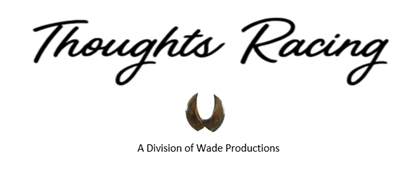Salute To Wally Parks: The Journalist Concerned About Media
Fourth in a series, as told by Richard Parks

By Susan Wade
Richard Parks, the elder of National Hot Rod Association founder Wally Parks’ two sons, has given permission to Thoughts Racing share excerpts from his voluminous compilation of his family’s and father’s history. This is the fourth installment in a tribute to the remarkable man who passed away 15 years ago this September.
Here Richard Parks presents a couple of looks at Wally Parks’ concerns about the media’s ability to paint hot-rodding with a terribly negative brush – and what he did to make his own case. . . .
1 JULY 1952 MALE magazine article by Fred Horsley
If my father was concerned about articles on hot-rodding showing up in Argosy “The Man’s Magazine,” then he must have had nightmares about what MALE magazine could do to the image of hot rods.
With articles titled Sin Factory, Kill and be Damned, Fury at Hannegan’s Hole, Death in the Electric Chair, and Jail Break it appeared at first glance that hot-rodders were going to be in for more pain.
But Fred Horsley’s article was called “Hot Rod-the Safest Car on the Road.” Would Dad finally catch a break from these men’s magazines? But Horsley was not out to savage hot-rodding. In fact he supported it and exclaimed, “If the words ‘hot rod’ make you think of a smashed car, smeared with blood, you’re just another sucker for a newspaper headline.”
Horsley doesn’t shy away from the carnage on the roads of America and how at any given moment there are young people playing dangerous games with the automobile, like the game of “Chicken,” but they aren’t hot-rodders who are careful with their vehicles and their lives. Death and destruction are real, Horsley avers, but that can be attributed to immaturity and not to hot-rodders, who show caring and concern for their fellow drivers. He points out all the good that hot-rodders do and the safety rules and procedures they follow. He shows the kinds of cars that are true hot rods and the poor examples of the shot-rodders. What is unusual about this story is where it was published: in a men’s magazine and not in Life or Time. But after reading the story, I can sense my father sighed – one less letter to the editor that he had to write in complaint.
1 JULY 1952 HRM issue, the Editorial is no longer defensive
It takes a lot of courage to stand up in the face of persecution. And when a man has that courage, he will attract a great deal of attacks and also friends.
In the editorial column, Wally Parks speaks out: “It is time in our opinion, for hot-rodders to get rid of their apologetic attitude and assume the offensive in the interests of their sport. Hot-rodding, when it is orderly, law abiding, and constructive, is nothing of which we have to be ashamed, any more than we would be ashamed of our activity in football, bowling, or any other sport. Being a whipping boy for uninformed public officials, irresponsible writers, or other sensation-seekers is not a pleasant position, but we shall continue to find ourselves in that role unless we get our thinking straightened out.”
He is rallying the troops and giving them courage for the fight ahead. It will be a few more years before the battle is won, but never fear, he tells us – we will win it.
When you have such a leader, it instills confidence in those who are voiceless and those who are timid. It isn’t easy standing alone in the community. It’s better if you can hold up the recent issue of HRM’s editorial column to your buddies and say, “Me too.”
There are other voices, as well; I don’t want to make any assumption that Wally Parks was the only voice in the wilderness. Give me time; I am going to get to these heroes soon.
